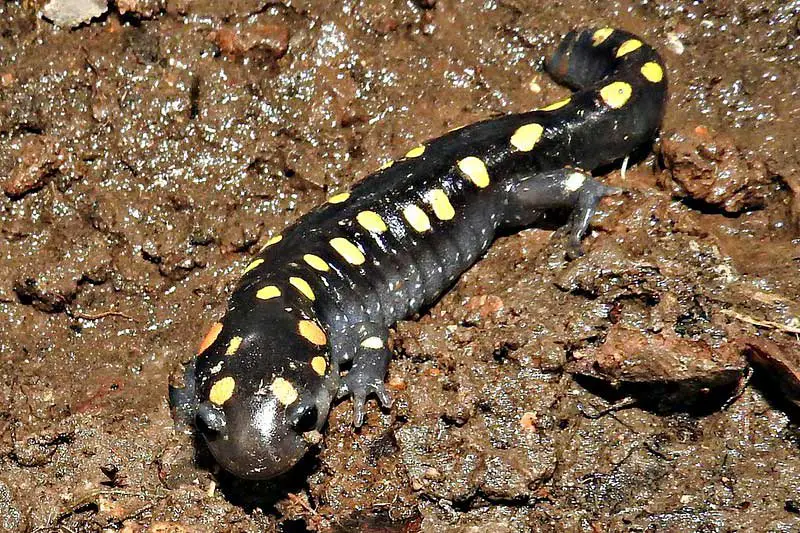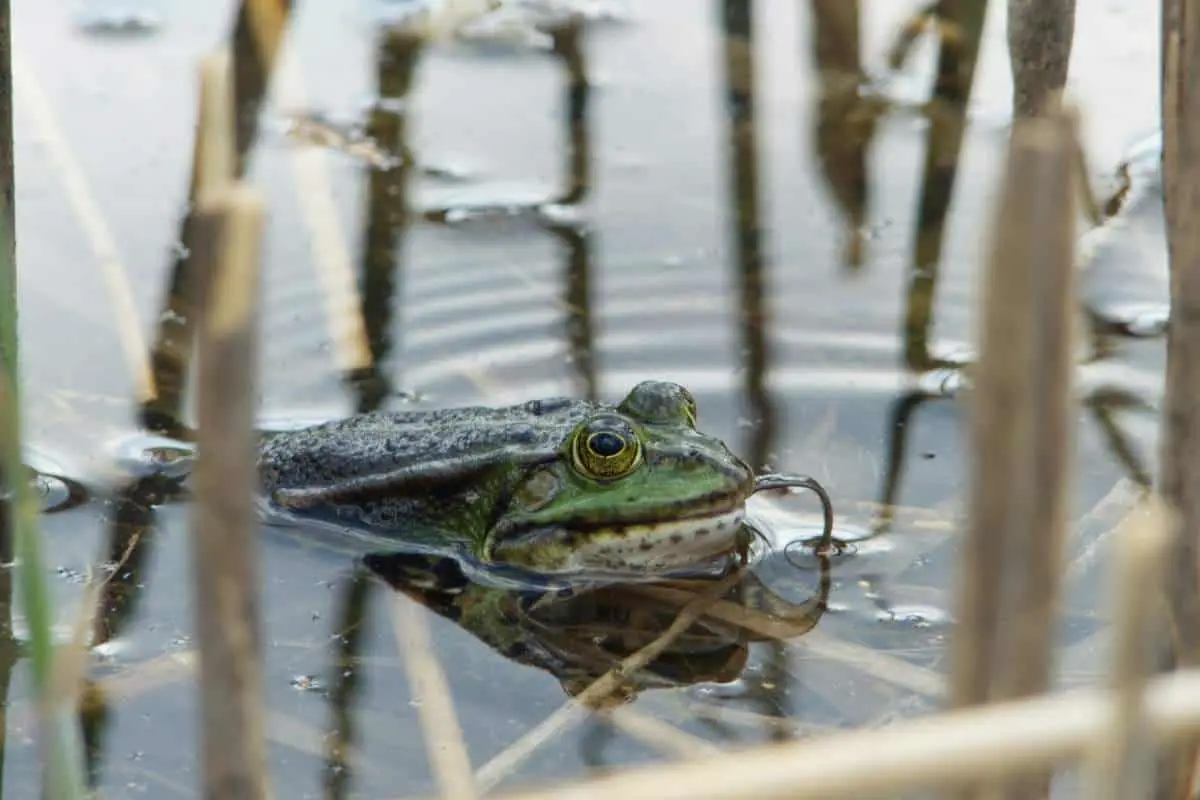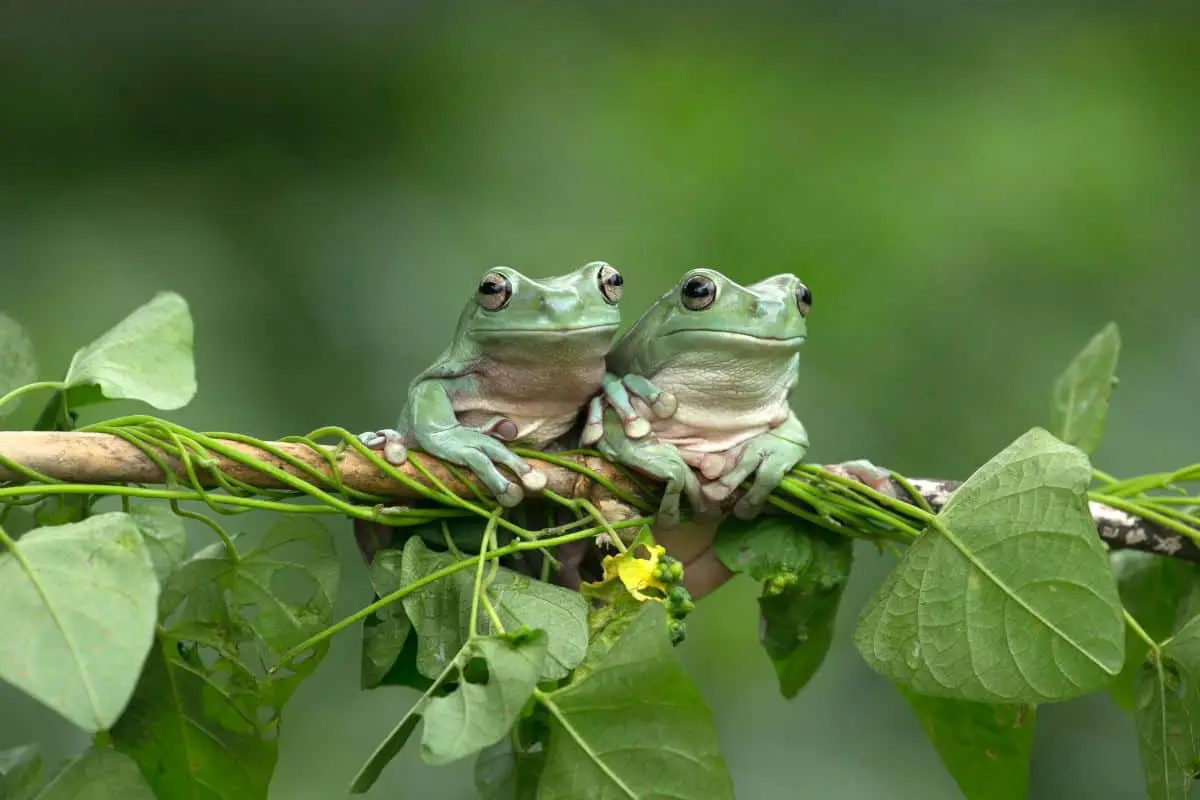If you’ve ever seen a spotted salamander, you might be wondering what these little amphibians are. There are numerous facts about spotted salamanders that can help us learn more about these small creatures. These small salamanders are distinguished by their dark bodies and rows of yellow spots down their backs.
Because they are small and shy animals that only emerge to reproduce and feed, it may be challenging to find them when it is not breeding season. That’s why we’ve compiled a list of 13 fascinating facts about them!
13 Facts about spotted salamanders
1. These amphibians are considered mole salamanders
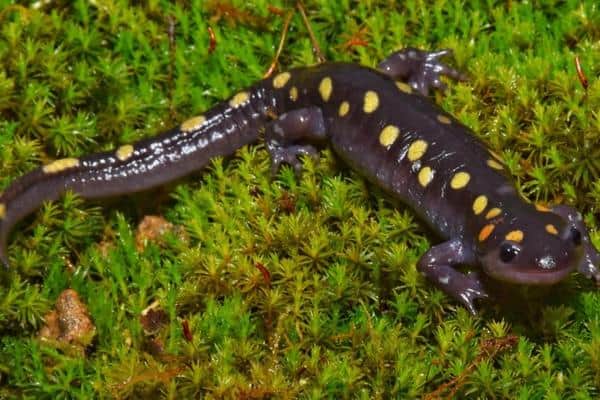
Mole salamanders are a type of salamanders that spends the majority of their time underground and only emerges at night to hunt. The name of these amphibians refers to their natural tendency to quickly burrow into the ground and hide from predators.
The spotted salamander is one of several species of mole salamanders. Spotted salamanders spend most of their lives underground, except for during the breeding season.
2. They use their sticky tongue to catch prey
Since spotted salamanders are carnivores, meat makes up most of their diet. Insects and small invertebrates such as earthworms, slugs, snails, spiders, millipedes, centipedes, and insects are among their prey.
Adults use their long, sticky tongues to capture their prey during hunting. However, as tadpoles, these creatures are aggressive predators who eat any small animals they can find. When food is scarce, they’ll become cannibalistic and feed on the larvae of other spotted salamanders to survive.
3. The spotted salamander is the official state amphibian of Ohio and South Carolina
Since they’re the only species indigenous to the entire state, this species has become the official state amphibian of Ohio, Pennsylvania, and South Carolina. In 1998, the third grade class at Spartanburg’s Woodland Heights Elementary School discovered that the state lacks an official state amphibian.
This prompted them to file a petition to make the spotted salamander the state’s official amphibian. Though this species is rarely seen due to its burrowing behavior, you can still find it throughout the state.
4. Most of their time is spent in burrows underground
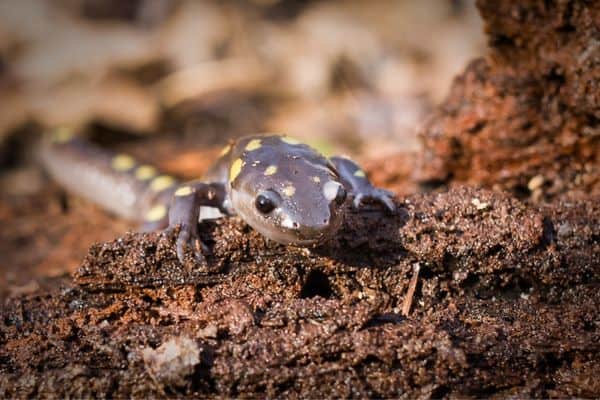
Adult spotted salamanders are nocturnal and shy creatures. They spend the majority of their time underground, but come out to mate between winter and early spring.
These animals prefer to live in forests near bodies of water, such as lakes and ponds, where they can easily migrate to breed and lay eggs. Their burrows are typically 1.3 m below ground, but they can also be found hiding under leaf litter and fallen woods.
5. Male adult salamanders engage in dance-like behaviors during breeding
Spotted salamanders are a salamander species that, like many amphibians, exhibit courtship behavior. This behavior is critical to their reproductive success and is triggered by both male and female pheromone release.
They have a courtship breeding pattern in which the males appear to dance to attract potential mates. Male salamanders are also known to push other males away and drop their spermatophores on top of them to overpower one another.
When they have attracted a female, they’ll begin to lay down their sperm packet for the female to pick up and use to fertilize her eggs.
6. Spotted Salamanders migrate at night
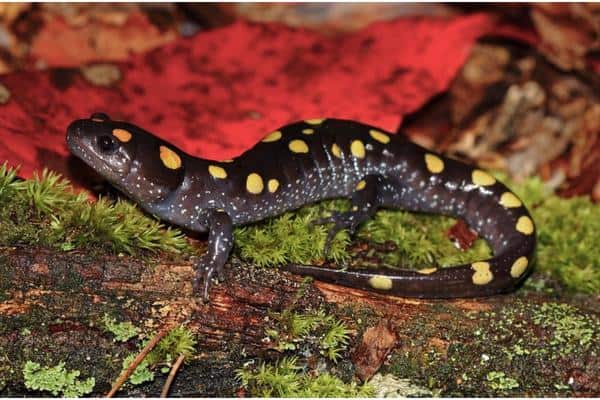
This species is also regarded as an early spring indicator. During the first warm rainfall after winter, spotted salamanders will migrate in large numbers to ponds and ventral pools to breed. This marks the beginning of the spring season.
Males move faster than females and will be the first to reach the water. Migration occurs at night, between 8 and 11 pm. This prevents the salamander’s skin from being damaged by the sun’s heat.
7. They hibernate in burrows or crevices underground during winter
The spotted salamander is one of many animal species that hibernate during the cold months of the year to conserve energy and survive periods when food is scarce. These species emerge from their dens to forage for food and look for mates when the weather is favorable for them.
Salamanders are ectothermic, relying on outside heat to regulate their body temperature. They slow down their metabolism and activity levels in cold temperatures until spring arrives and temperatures rise.
8. They produce a nasty-tasting toxin
Spotted salamanders use a variety of defense mechanisms to protect themselves from predators. When a threat approaches, one of the first things they do is hide in their burrows and leaf litter to avoid predators.
They also have a gland in the back and neck that secretes a milky toxin to frighten off predators. If the threat persists, they’ll bite in self-defense in the hope that the predators will flee.
9. Spotted salamander eggs sometimes contain green algae
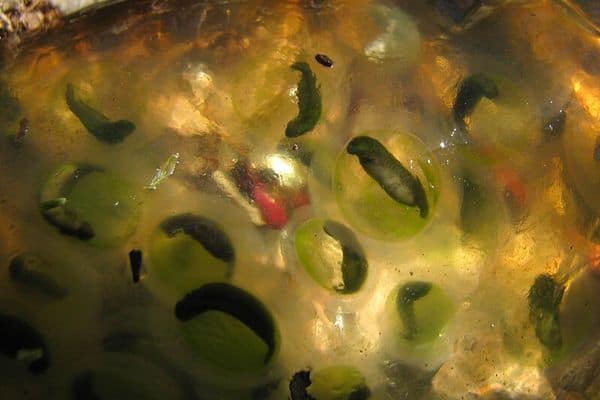
The egg of a Spotted Salamander forms a symbiotic relationship with a species of green algae called Oophila amblystomatis. This alga grows inside the egg and aids in the embryo’s survival by feeding on the carbon dioxide produced and, in turn, releasing oxygen, which supports the larva’s growth inside the egg.
Salamander eggs are laid underwater with a thick layer of white jelly covering them to protect them from predators during this stage. They can also disguise themselves as underwater algae thanks to the presence of these green algae, which lowers the possibility that other carnivorous animals will eat them.
10. Adult spotted salamanders live about 25 years, but some have been recorded to live as long as 30 years
Spotted Salamanders have a relatively long life span for salamanders, with an average lifespan of 25 years that can reach 30 years. This species’ eggs take four to seven weeks to hatch after the female lays them. After 2-4 months, they’ll begin to transform into juveniles capable of living on land.
Only 10% of them survive as juveniles before leaving the pond due to a variety of factors such as predation, water drying up, and diseases. Once these salamanders are on land, they already have a high chance of surviving. They‘ll reach sexual maturity and be considered adults after 2-3 years.
11. They’re native to North America
Spotted salamanders are native to North America, where they can be found in a variety of states. They can be found in Canada, from Nova Scotia to the Gaspé Peninsula. In the United States, they’re most common along the Atlantic coast and the southeastern states, except for Florida.
12. Spotted salamanders can have different colors
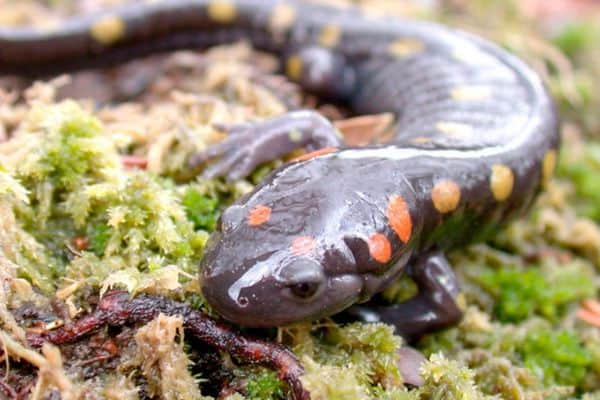
Spotted Salamanders are an example of a species with a different color variation. Their primary color is black, but they can also be blueish-black, dark gray, dark green, or dark brown. Their backs have yellow-orange spots that are arranged in two rows.
However, the spots near their heads are more orange in color, while the spots on the rest of their bodies are bright yellow.
13. They hatch as aquatic and grow to be terrestrial
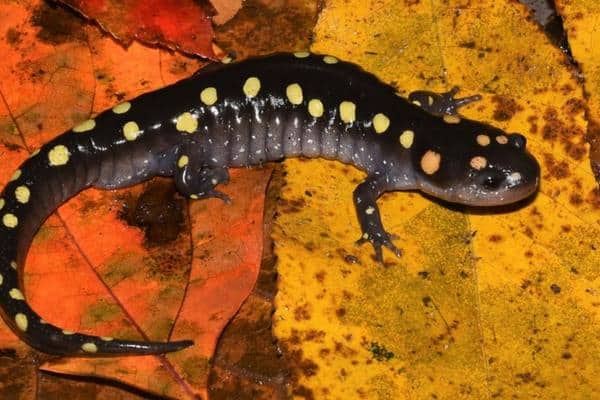
The Spotted Salamander is an amphibian that spends the first months of its life in water. They hatch as aquatic larvae with a greenish body, weak legs, and a tail for swimming. These animals also have feathery gills, allowing them to breathe underwater.
When they become juveniles, their lungs and strong legs develop, enabling them to walk and live on land. Then, they’ll spend their entire lives as terrestrial creatures, only migrating to the water to reproduce.
